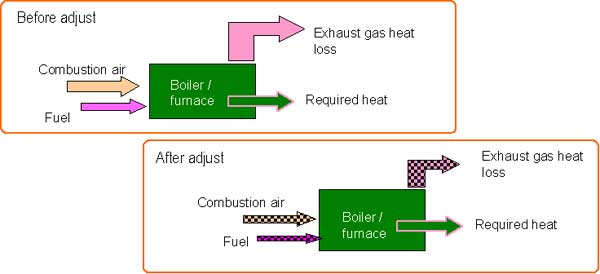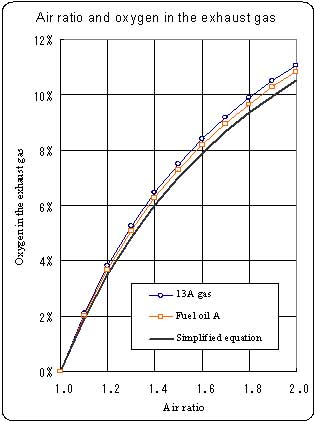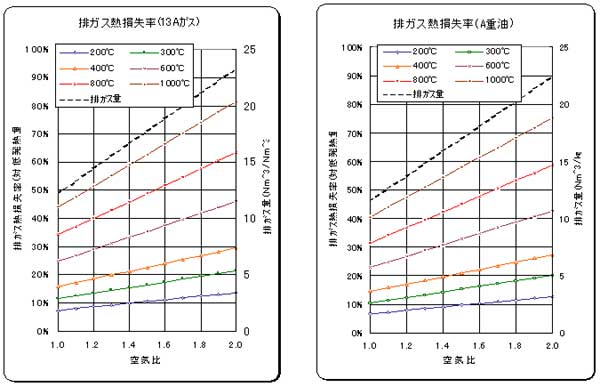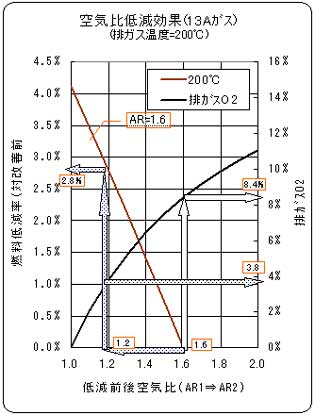Optimization of air ratio
- The excess air for combustion such as that in a boiler contributes only to an increase in heat loss with the exhaust gas.
- The degree of excess air is expressed by air ratio.
- The air ratio at 1 (one) represents the theoretical combustion.
- The air ratio is expressed by 21/(21-O2%) where O2 is oxygen content in the exhaust gas.
- The Criteria of the Law for Rational Use of Energy set both standard and target values of air ratios for boilers and industrial furnaces.



